Why Your Brain Sees Gods and Ghosts in Random Events

TL;DR: Transactive memory is the invisible system that makes couples, teams, and families smarter together than apart. Psychologist Daniel Wegner discovered in 1985 that our brains delegate knowledge to trusted partners, creating shared memory networks that reduce cognitive load by up to 40%. But these systems are fragile—breaking down when members leave, technology overwhelms, or communication fails. As AI and remote work reshape collaboration, understanding how to intentionally build and maintain transactive memory could be your competitive advantage in relationships and at work.

When Sarah's husband died suddenly, she discovered something unsettling: she couldn't remember their Wi-Fi password. She couldn't recall where they kept the insurance documents. The name of their accountant? Gone. It wasn't grief-induced amnesia—it was something far more fascinating. For fifteen years, her brain had quietly delegated these memories to him, trusting he would always be there to retrieve them. Scientists call this phenomenon transactive memory, and it's silently orchestrating your relationships, your workplace performance, and perhaps even the future of artificial intelligence.
By 2030, researchers predict that most of us will rely more on our partners, teammates, and digital assistants for memory storage than on our own brains. This isn't cognitive decline—it's cognitive evolution. And understanding how it works could transform everything from how companies build remote teams to how couples survive the pressures of modern life.
In 1985, psychologist Daniel Wegner proposed a radical idea: human memory isn't just individual. When people form close relationships—romantic partners, work teams, even families—their minds create an invisible network, a collective memory system greater than the sum of its parts. Wegner called it transactive memory, borrowing from computer science to describe how groups encode, store, and retrieve knowledge across multiple human "hard drives."
The theory emerged from a simple observation about couples. Wegner noticed that long-married partners didn't just finish each other's sentences—they had developed a sophisticated division of cognitive labor. One partner became the family historian, remembering birthdays and anniversaries. The other tracked finances and medical information. Neither needed to remember everything; they just needed to know who remembered what.
This wasn't just anecdotal. In controlled experiments, Wegner's team found that romantic partners recalled 25-40% more information when working together than strangers paired randomly—not because couples were smarter, but because they had built mental maps of each other's expertise. When asked to recall a list of food items, tools, and celebrity names, couples naturally specialized: "You remember the recipes, I'll handle the hardware store stuff."
The implications were staggering. A transactive memory system doesn't just store facts—it stores metamemory: knowledge about knowledge. It's an index, a directory, a shared filing system that tells you exactly where to look when you need information. And once established, it reduces cognitive load by 30-40% in routine collaborative tasks, freeing mental bandwidth for creative problem-solving and strategic thinking.
But here's where it gets really interesting: this process happens largely without conscious awareness. Your brain is constantly updating its directory of "who knows what" through everyday interactions, building invisible threads of interdependence that make you faster, smarter, and more efficient—until those threads are suddenly cut.
Transactive memory isn't new. It's likely been wired into human cognition since our ancestors lived in small hunter-gatherer bands, where survival depended on distributed expertise: the elder who knew which plants were poisonous, the tracker who could read animal signs, the toolmaker who understood flint knapping. Specialization allowed groups to store vastly more survival-critical knowledge than any individual could master alone.
But the modern workplace has turbocharged this ancient mechanism. The printing press, then the telegraph, then the internet progressively expanded the volume of knowledge humans needed to manage. No single person can master even a fraction of what's knowable in their field. So we specialize—and increasingly, we rely on teams with complementary expertise to tackle complex problems.
Consider the Manhattan Project: physicists, engineers, mathematicians, and military strategists each held pieces of the atomic puzzle. No individual knew everything, but the group's transactive memory system—knowing who to ask about uranium enrichment versus weapon design—enabled them to build the bomb in under three years. The same pattern holds today in software development, medical surgery teams, and aerospace engineering. Modern work is fundamentally transactive.
History also teaches us what happens when these systems break down. After the fall of Rome, Europe lost architectural knowledge because master builders hadn't trained enough apprentices. The recipe for Roman concrete—superior to modern formulations—vanished for over a millennium. The Library of Alexandria's destruction erased irreplaceable texts because knowledge existed in single copies, with no transactive network to distribute and preserve it. Redundancy and distribution, it turns out, are not inefficiencies—they're resilience strategies.
Today we face a parallel risk with employee turnover. When a veteran engineer retires without mentoring successors, organizations lose not just facts but the metamemory of where critical information resides. One study found that businesses lose $31.5 billion annually because knowledge isn't effectively shared—a failure of transactive memory at organizational scale.
So how exactly does transactive memory work? Wegner identified three core processes that build and maintain these systems:
Directory Updating: This is the foundational step—learning who knows what. It happens through explicit communication ("I'm really good with Excel formulas") and implicit observation (watching a colleague troubleshoot a network issue). Over time, your brain builds a mental rolodex: Jamie knows graphic design, Marcus handles client contracts, Chen is the database expert.
Crucially, research shows that explicit communication about expertise accelerates directory development far more than general content discussion. Teams that spend 15 minutes at kickoff meetings mapping members' skills develop stronger transactive memory than teams that dive straight into task work. The directory must be accurate, shared across all members, and continuously updated as expertise evolves.
Information Allocation: Once the directory exists, new information flows efficiently to the right expert. When a question about tax law arises, you don't spend mental energy trying to recall details—you ping the team's tax specialist. This delegation conserves cognitive resources and ensures information is stored by those best equipped to contextualize and retain it.
Interestingly, initial knowledge assignments often rely on stereotypes ("Let the woman plan the office party; let the man handle the server"). But these assumptions, whether warranted or not, can become self-fulfilling prophecies: given responsibility for an area, people develop genuine expertise over time. This highlights both the power and the peril of early directory formation.
Retrieval Coordination: When the group needs information, members don't search randomly—they strategically query the expert. This relies on trust (credibility) that the expert actually knows the domain, and on established communication norms (coordination) that make asking easy. If team members hoard information or the social hierarchy discourages questions, the system collapses.
These three processes work in concert, much like a well-indexed library. Encoding builds the catalog, allocation shelves books in the right section, and retrieval lets patrons find what they need without reading every spine. The result: groups with strong transactive memory systems outperform groups with higher average individual expertise, because collaboration quality trumps raw knowledge.
Neuroscience supports this. Brain imaging studies reveal that when people retrieve information from a trusted partner, they activate similar neural regions as when recalling personal memories—the partner's knowledge is, cognitively speaking, almost as accessible as one's own. This blurs the line between "my memory" and "our memory," suggesting that in close relationships, the boundaries of the self become genuinely porous.
Transactive memory manifests differently depending on context—but its effects are unmistakable.
In romantic partnerships: Couples married for 10+ years demonstrate significantly higher transactive memory accuracy than newly dating partners. Long-term couples don't just know each other's favorite foods; they know who remembers anniversary dates, who tracks medical appointments, who handles car maintenance. This division of cognitive labor reduces individual mental load and improves household efficiency.
But it creates vulnerability. When a partner dies or a relationship ends, the surviving individual often experiences profound disorientation—not just emotional grief, but cognitive loss. Suddenly, entire knowledge domains are inaccessible. One widow described it as "losing half my brain." This isn't hyperbole; transactive memory research shows that after a breakup or bereavement, people genuinely forget information they had delegated to their ex-partner.
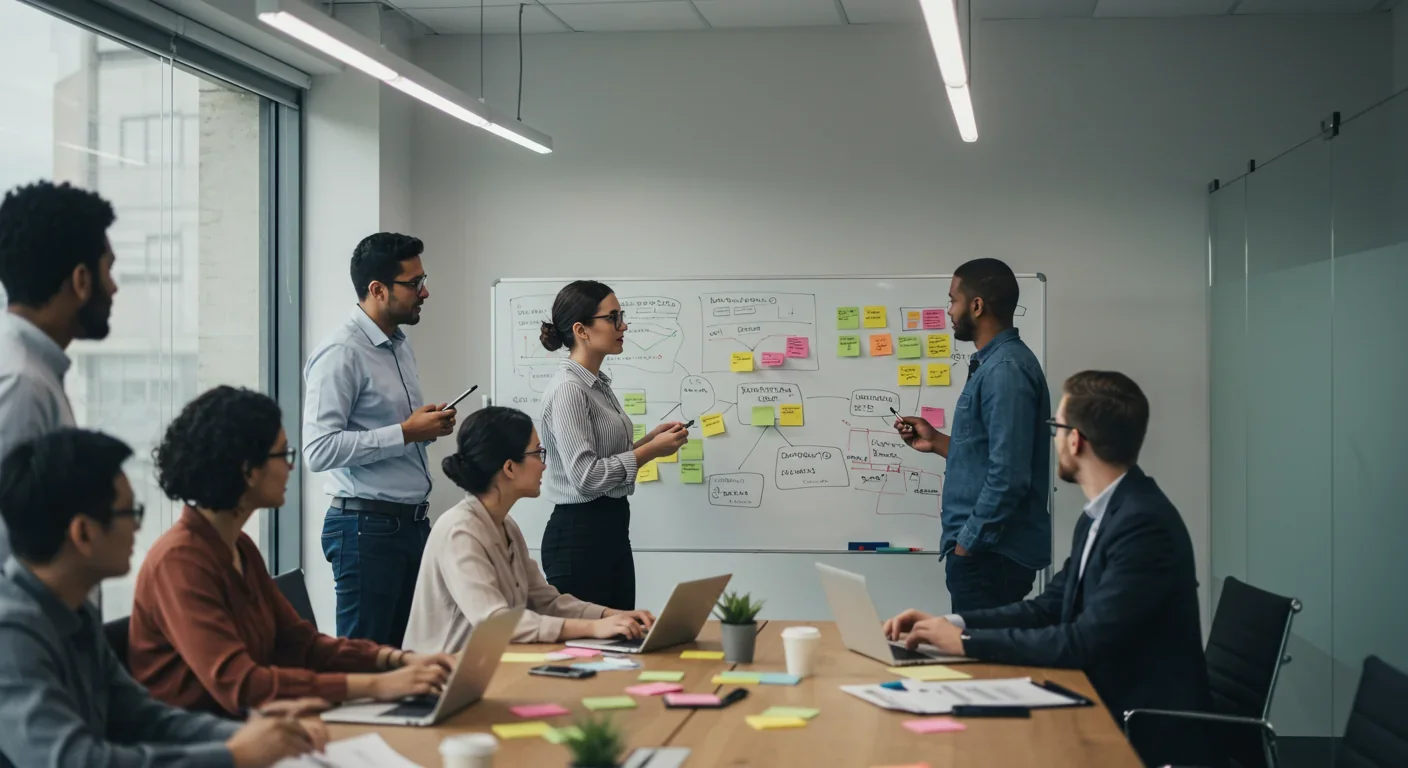
In workplace teams: Project teams that train together recall more task-relevant information and perform 14% faster than teams with identical skills but no shared training. Why? Joint training accelerates directory updating. Members learn each other's strengths in real time, building trust and communication norms simultaneously.
Consulting firms, tech companies, and product development teams with well-developed transactive memory systems consistently outperform peers on complex, interdependent tasks. Air traffic control teams with strong TMS make fewer errors because each member knows instantly who to consult about weather, aircraft specs, or runway logistics. The memory system is the competitive advantage.
In families: Generational knowledge transfer relies heavily on transactive memory. Grandparents remember family history and recipes; parents track school schedules and medical records; children increasingly handle tech troubleshooting. This creates a multi-layered memory network where each generation holds unique expertise, accessible to others through simple questions.
But family systems are fragile. When elders die without passing on oral histories, lineages lose their narrative memory. When parents divorce, children must rebuild dual memory systems across two households. Family transactive memory is resilience in normal times, brittleness in crises.
In emergency response teams: Research on paramedics, firefighters, and disaster-response units reveals a dark side. In high-stress, fast-changing environments, lack of structured training erodes transactive memory. Teams that haven't drilled together struggle to coordinate under pressure; decision times lengthen, tasks are duplicated or missed, and errors multiply. Training isn't just skill-building—it's memory-system building.
One study using cognitive mapping found that emergency teams with formal, repeated training exercises showed strong transactive memory and rapid task allocation. Teams without such training exhibited confused hierarchies, poor communication, and weak specialization—even when individual members were highly competent.
Across all contexts, one pattern emerges: transactive memory thrives on stability, trust, and communication. When team membership churns, when leaders hoard information, when silos prevent cross-functional dialogue, the system breaks down. Organizations with employee turnover above 20% annually struggle to maintain effective transactive memory, trapping institutional knowledge in a few long-tenured heads—or losing it entirely.
Transactive memory systems develop naturally over time—typically 6-12 months for new teams—but you can accelerate the process with intentional strategies.
The Capability Comb: This visual tool maps each team member's expertise and growth areas on a shared matrix. Columns represent knowledge domains (coding languages, design tools, industry sectors); rows represent team members. Each person rates their proficiency and interest. The result is a vivid directory that makes asking "Who knows X?" trivial. Teams using Capability Combs report 30-40% faster onboarding and reduced duplication of effort.
The Team Manual: Adapted from the "Manual of Me" exercise, each member writes a short guide: "How I work best, what I know deeply, where I'm learning, and how to get help from me." Sharing these builds empathy, clarifies communication preferences, and jump-starts directory updating. It also reduces the social friction of asking for help—members know in advance that offers of expertise are genuine.
Deliberate Practice: Run "fire drills"—simulated incidents or hackathon-style challenges that require coordination under time pressure. These safe-to-fail environments let members test the transactive memory system, identify gaps ("Wait, who was supposed to handle database backups?"), and refine roles before real stakes arrive. Research shows that teams practicing together develop TMS 50% faster than teams that train separately then attempt to collaborate.
Knowledge-Sharing Rituals: Establish routines—weekly show-and-tells, monthly knowledge exchanges, documented "lessons learned" after projects. A Forrester study found that 36% of employees struggle to share information across teams due to lack of structure. Rituals create predictable channels, normalizing the flow of expertise and keeping directories current as members develop new skills.
Leverage Technology Wisely: Digital tools can support transactive memory—or undermine it. Shared knowledge bases (Notion, Confluence, SharePoint) act as external memory aids, making information searchable and persistent. But they risk replacing interpersonal memory systems if overused. The key is balance: use platforms to encode knowledge ("This is where specs live") while preserving metamemory through human relationships ("Ask Jordan about edge cases").
AI-powered platforms now offer features like expertise tagging, recommendation engines ("Jordan previously solved a problem like yours"), and even automated skill mapping. According to Gartner, AI augmentation could generate €2.6 trillion in business value by enabling better knowledge flows—essentially, supercharging organizational transactive memory.
Rebuild After Turnover: When key members leave, don't assume the system self-heals. Explicitly re-map expertise, update documentation, and run refresher exercises to re-establish coordination norms. One tech company instituted "handoff sprints"—two-week periods where departing employees pair with successors to transfer not just tasks but the mental map of who knows what across the broader organization.
Avoid Common Pitfalls: Excessive specialization creates single points of failure. Build redundancy: have at least two people knowledgeable in critical domains. Stereotype-driven assignments can entrench biases; periodically audit whether expertise allocations reflect actual skills or unexamined assumptions ("Why is Sarah always taking notes?"). And beware the "Google effect"—relying so heavily on search engines that you stop consulting colleagues, weakening interpersonal trust and memory networks.
Transactive memory systems are powerful—but fragile. Several common breakdowns threaten their effectiveness:
Turnover and Membership Instability: When a key expert leaves, the directory becomes outdated. Queries hit dead ends. Knowledge vanishes. Organizations combat this by cross-training, documentation, and exit interviews focused on metamemory ("Who else knows this? Where would you look?"), not just content.
Status Hierarchies: If junior members fear asking senior colleagues questions, retrieval coordination fails. Psychological safety is essential. Teams with flat communication norms outperform hierarchical teams on transactive memory metrics, even when the latter have more experienced members. Leaders must model asking for help and reward knowledge-sharing publicly.
Siloed Communication: Functional departments that don't interact develop isolated memory systems. Marketing doesn't know what Engineering knows; Sales can't access Product's insights. Breaking silos requires cross-functional projects, shared platforms, and incentives that reward collaboration over hoarding.
Technology Overload: Paradoxically, too many tools fragment memory. When knowledge lives in Slack threads, email archives, Google Docs, and personal notebooks, retrieval fails not from lack of information but from search paralysis. Unified platforms reduce this friction.
Digital Amnesia: Over-reliance on external aids—search engines, cloud storage, AI assistants—can atrophy internal memory and interpersonal memory networks. People forget not just facts but the habit of asking colleagues. One study found that frequent internet searchers showed weaker recall and shallower processing than those who consulted knowledgeable peers. The fix: design systems that route questions to humans first, using tech as backup.
Misaligned Expectations: If the group's shared directory is inaccurate—everyone thinks Jamie handles compliance, but Jamie hasn't touched it in a year—coordination breaks down. Regular check-ins and transparent skill evolution keep expectations aligned.
Cultural Barriers: In some organizational cultures, admitting you don't know something signals weakness. In others, sharing expertise feels like surrendering competitive advantage. Shifting culture requires leadership commitment, celebrating collaborative wins, and structuring rewards around team outcomes rather than individual heroics.
Addressing these challenges isn't optional. Research shows that teams with weak transactive memory spend over 5 hours per week waiting for information, duplicating work, or making decisions with incomplete data. That's 13% of a 40-hour week lost to memory-system failures.
We've always used external memory aids—clay tablets, books, hard drives. But artificial intelligence represents a qualitative leap: not just passive storage but active retrieval, synthesis, and even directory management.
AI as External Expert: Tools like ChatGPT function as on-demand specialists in virtually any domain. Need a Python script? Legal contract language? Historical context? AI can supply it instantly. This effectively adds a tireless, infinitely patient team member to your transactive memory network—one who never forgets, never sleeps, and never leaves the organization.
Gartner predicted that by 2021, AI augmentation would recover 6.2 billion hours of worker productivity globally. The mechanism? Offloading routine information retrieval to machines, freeing humans for higher-order thinking. Early evidence suggests this is happening: knowledge workers report spending less time searching for information and more time synthesizing it.

AI as Memory Coordinator: Emerging platforms don't just store knowledge—they map who knows what. By analyzing emails, documents, and collaboration patterns, AI can auto-generate expertise directories: "For questions about the European market, contact Ingrid; she's authored 12 reports and leads three related projects." This automates directory updating, a traditionally slow, manual process.
Some systems even predict who will know based on learning trajectories, proactively suggesting, "You might want to consult Raj—he's been upskilling in machine learning and could help with your model." This predictive metamemory could radically accelerate team formation and cross-functional collaboration.
AI in Caregiver Networks: Researchers are exploring AI to strengthen transactive memory in informal, loosely connected groups—like networks of family and friends caring for an aging loved one. An AI assistant could track who last checked medication, who knows the primary care doctor's name, who has legal power of attorney. For distributed groups lacking daily contact, this could prevent critical knowledge gaps and coordination failures.
Human-AI Mental Models: A 2025 study introduced an After-Action Explanation tool using GPT-4. After collaborative tasks, team members query the AI about decisions and behaviors: "Why did the system recommend option B?" The AI generates context-aware explanations, rapidly aligning human understanding with machine logic. Over iterative sessions, teams build shared mental models of the AI's reasoning—a transactive memory system spanning human and artificial minds.
This is profound: transactive memory theory, developed for human groups, now explicitly incorporates AI agents. The boundary of "the team" is expanding beyond biology.
Risks and Trade-offs: Yet dependency on AI memory carries risks. Digital amnesia—the tendency to forget information outsourced to devices—is accelerating. Studies show people who frequently Google answers recall less and process information more shallowly than those who rely on peers. If AI becomes the default expert, interpersonal knowledge networks may atrophy, eroding the trust and social bonds that make human collaboration resilient.
Moreover, AI lacks the credibility dimension of human transactive memory. We trust colleagues not just because they know facts but because we've seen their judgment in action, because they understand context and nuance. AI can retrieve information but can't (yet) replicate the relational trust that underpins effective memory systems.
The optimal future likely blends human and AI memory partners: machines handle routine retrieval and directory management; humans provide contextual judgment, relational trust, and creative synthesis. But achieving this balance requires intentional design—building systems that enhance, rather than replace, human interdependence.
The COVID-19 pandemic forced a massive, unplanned experiment: millions of teams went remote overnight. And transactive memory systems struggled.
Virtual teams take approximately 50% longer to develop strong transactive memory than co-located teams. Why? Fewer informal interactions—no hallway chats, no overhearing a colleague troubleshoot a problem, no spontaneous whiteboard sessions. Directory updating, which thrives on observation and casual conversation, slows to a crawl.
Yet some remote teams thrive. The difference? Deliberate memory-system design. High-performing virtual teams:
Over-communicate expertise: Regular skill-sharing sessions, updated profiles, visible project contributions.
Establish communication norms: Clear protocols for who to ask about what, and how (Slack? Email? Zoom?).
Use synchronous check-ins: Video calls for coordination, preserving the relational richness that builds trust.
Leverage shared platforms: Centralized wikis and knowledge bases act as persistent, searchable external memory.
Ritualize knowledge transfer: Weekly "demos" where members showcase recent work, keeping everyone updated on evolving expertise.
Technology-mediated communication can preserve transactive memory across distance—but only when used strategically. Tools that make expertise visible and accessible strengthen the system; tools that fragment communication or bury knowledge in siloed channels weaken it.
Looking forward, several trends will shape transactive memory's evolution:
Hybrid Work Models: Organizations must design for both in-person and remote interactions, ensuring that transactive memory doesn't fragment into "office cliques" versus "remote silos." Rotating team members between locations, hybrid onboarding programs, and platform-agnostic knowledge systems will be critical.
Globalized Teams: As work becomes increasingly international, transactive memory must bridge time zones, languages, and cultural norms around knowledge-sharing. AI translation and asynchronous collaboration tools will play key roles, but so will cultural intelligence—understanding how different societies approach expertise, hierarchy, and asking for help.
AI Integration: The next decade will see AI move from tool to teammate. Organizations that treat AI as part of the transactive memory network—building shared mental models of its capabilities and limitations—will outperform those that view it as a black box. Human-AI collaboration will require new directory-updating practices: "What does the AI know? When should I defer to it? When should I override it?"
Aging Populations: In caregiving and eldercare, transactive memory systems will become lifelines. AI-assisted coordination platforms could help families, friends, and professionals share the cognitive load of managing complex medical and logistical needs, preserving dignity and autonomy for aging individuals.
Education and Lifelong Learning: As career half-lives shrink, individuals will increasingly rely on professional networks as transactive memory systems for continuous upskilling. "I don't need to master blockchain—I just need to know that Alex does, and I can call him." This shift privileges network-building and metamemory over static knowledge accumulation.
Resilience and Redundancy: Climate shocks, pandemics, and geopolitical instability will test organizational memory systems. Companies that build redundancy—cross-training, documentation, decentralized knowledge—will weather disruptions. Those reliant on single experts or brittle hierarchies will falter.
The future of work, relationships, and cognition itself is fundamentally transactive. We are not isolated minds; we are nodes in vast, invisible knowledge networks. Recognizing this—and designing systems to strengthen these networks—will determine who thrives in an increasingly complex, fast-changing world.
Transactive memory reveals a humbling truth: your mind is not entirely your own. It extends into your partner's brain, your teammates' expertise, your family's collective recall. You are smarter, faster, and more capable because of these invisible threads—and more vulnerable when they break.
But this interdependence isn't weakness. It's the evolutionary genius that let small human bands outsmart stronger predators, build civilizations, and land on the moon. It's what makes your team greater than the sum of its parts. It's why your relationship feels like a true partnership, not just cohabitation.
The question facing us now is not whether we'll rely on shared memory systems—we already do, and always have. The question is whether we'll build them intentionally, nurture them wisely, and extend them thoughtfully into the age of artificial intelligence.
Because in a world where knowledge doubles every few years, where careers span decades but skills become obsolete in months, where teams form and dissolve across continents—your ability to know who knows what may matter more than what you know yourself.
The mind you share could be your greatest asset. It's time to start treating it that way.
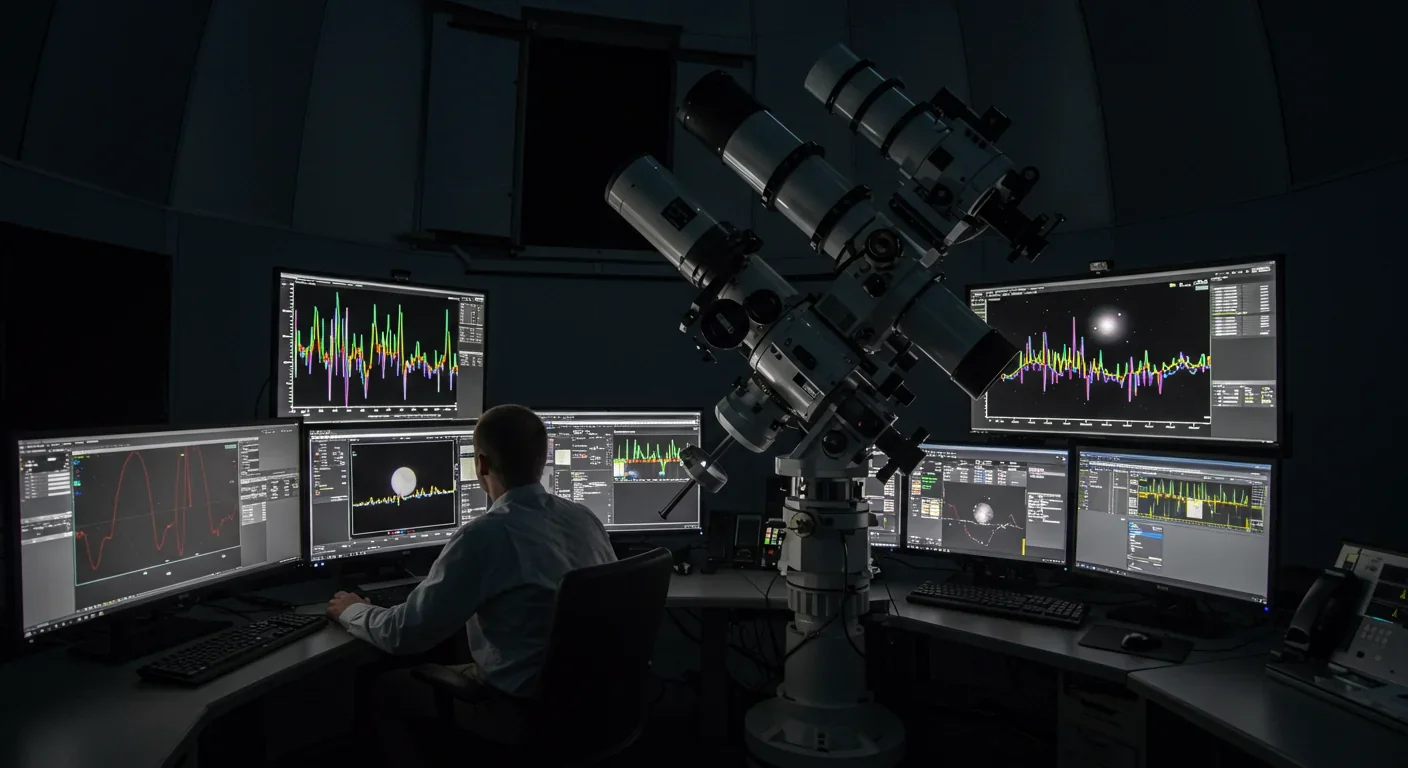
Over 80% of nearby white dwarfs show chemical fingerprints of destroyed planets in their atmospheres—cosmic crime scenes where astronomers perform planetary autopsies using spectroscopy. JWST recently discovered 12 debris disks with unprecedented diversity, from glassy silica dust to hidden planetary graveyards invisible to previous surveys. These stellar remnants offer the only direct measurement of exoplanet interiors, revealing Earth-like rocky worlds, Mercury-like metal-rich cores, and ev...
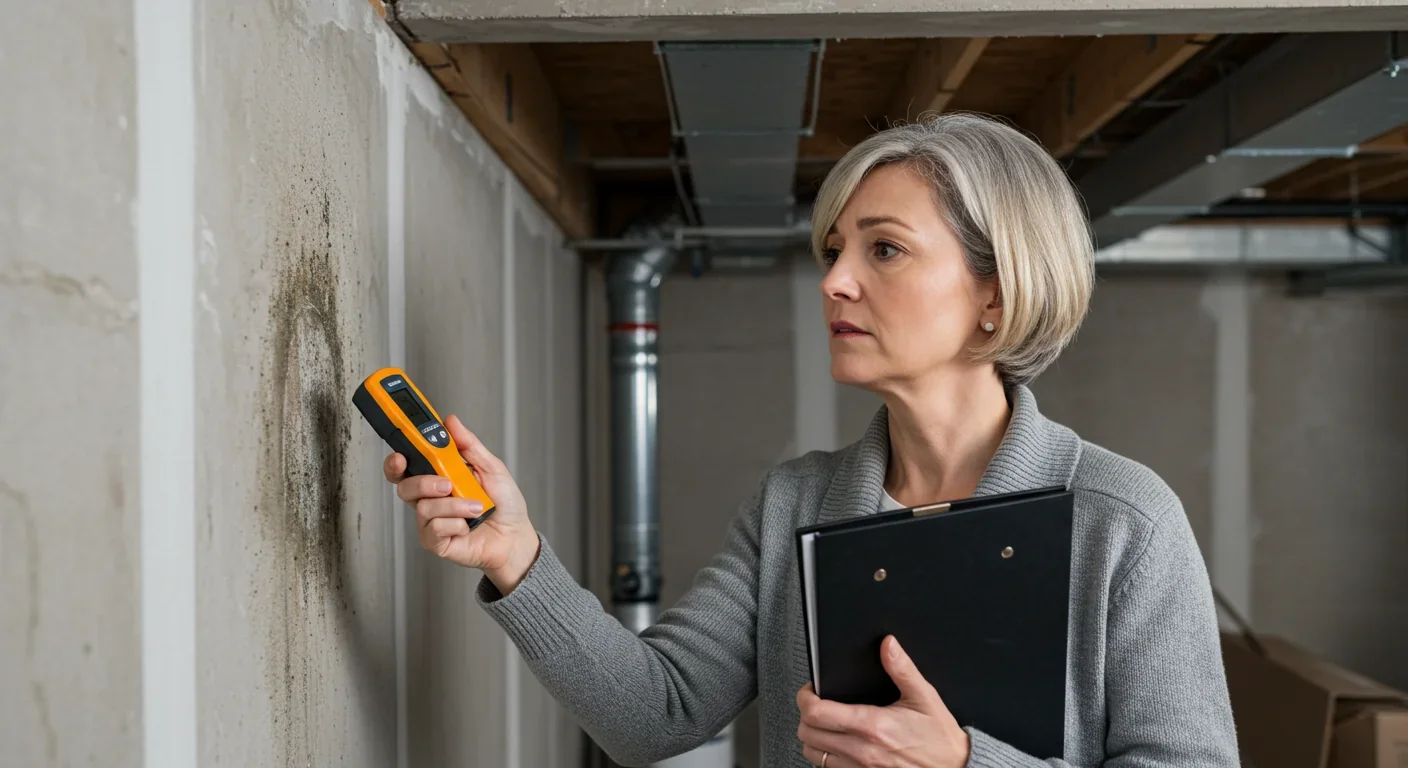
Hidden mold in homes releases invisible mycotoxins—toxic chemicals that persist long after mold removal, triggering chronic fatigue, brain fog, immune dysfunction, and neurological damage. Up to 50% of buildings harbor mold, yet most mycotoxin exposure goes undetected. Cutting-edge airborne testing, professional remediation, and medical detox protocols can reveal and reverse this silent epidemic, empowering individuals to reclaim their health.

Data centers consumed 415 terawatt-hours of electricity in 2024 and will nearly double that by 2030, driven by AI's insatiable energy appetite. Despite tech giants' renewable pledges, actual emissions are up to 662% higher than reported due to accounting loopholes. A digital pollution tax—similar to Europe's carbon border tariff—could finally force the industry to invest in efficiency technologies like liquid cooling, waste heat recovery, and time-matched renewable power, transforming volunta...

Transactive memory is the invisible system that makes couples, teams, and families smarter together than apart. Psychologist Daniel Wegner discovered in 1985 that our brains delegate knowledge to trusted partners, creating shared memory networks that reduce cognitive load by up to 40%. But these systems are fragile—breaking down when members leave, technology overwhelms, or communication fails. As AI and remote work reshape collaboration, understanding how to intentionally build and maintain ...
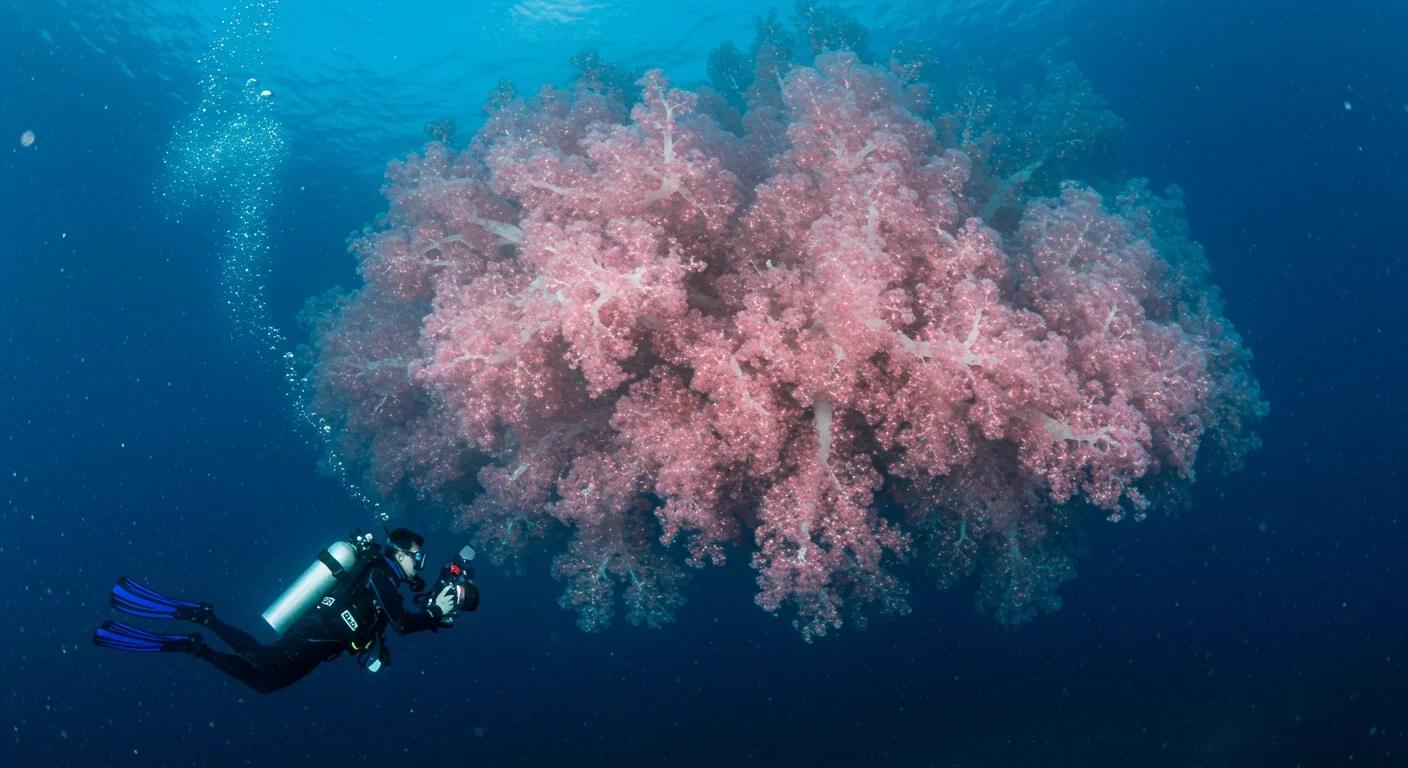
Mass coral spawning synchronization is one of nature's most precisely timed events, but climate change threatens to disrupt it. Scientists are responding with selective breeding, controlled laboratory spawning, and automated monitoring to preserve reef ecosystems.

Your smartphone isn't just a tool—it's part of your mind. The extended mind thesis argues that cognition extends beyond your skull into devices, AI assistants, and wearables that store, process, and predict your thoughts. While 79% of Americans now depend on digital devices for memory, this isn't amnesia—it's cognitive evolution. The challenge is designing tools that enhance thinking without hijacking attention or eroding autonomy. From brain-computer interfaces to AI tutors, the future of co...
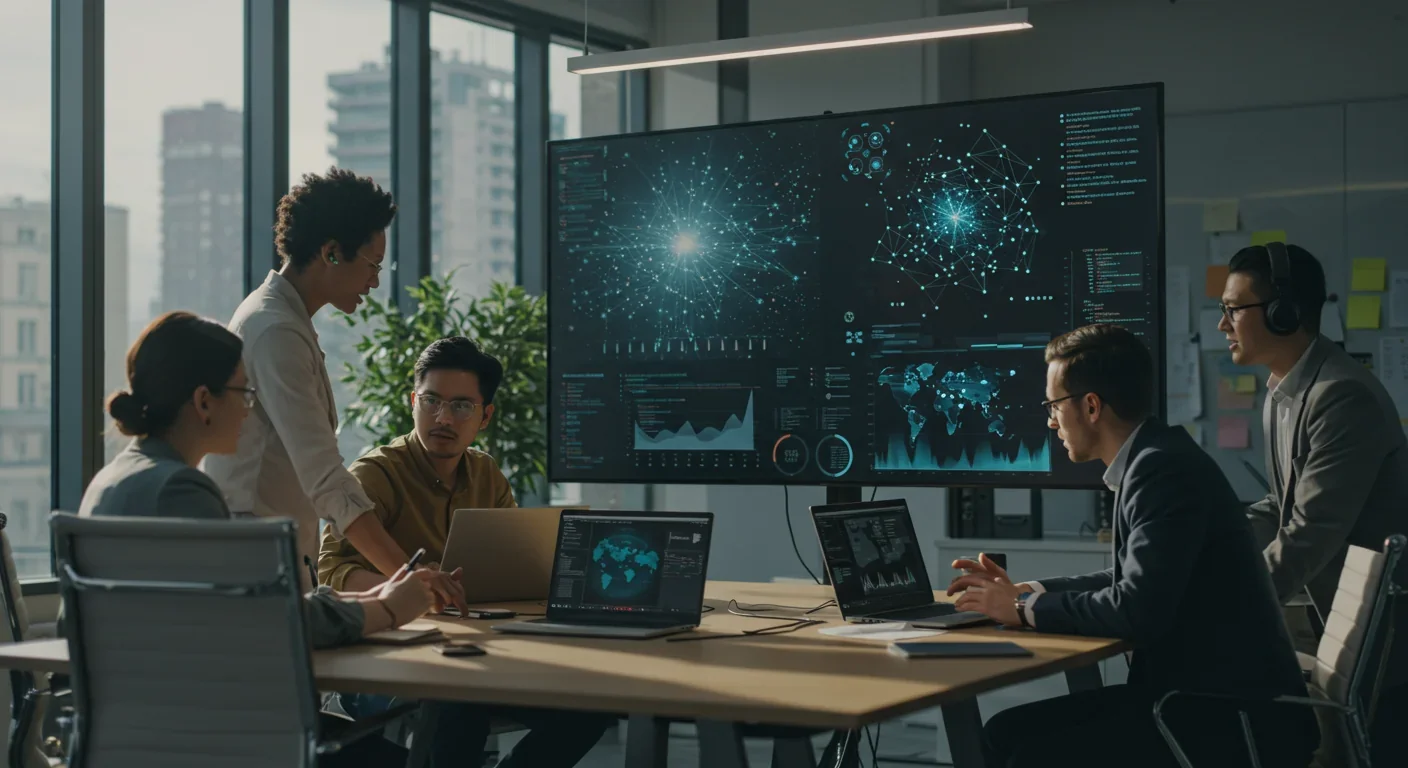
Transformers revolutionized AI by replacing sequential processing with parallel attention mechanisms. This breakthrough enabled models like GPT and BERT to understand context more deeply while training faster, fundamentally reshaping every domain from language to vision to multimodal AI.